Lighting Design for Houses of Worship
Posted by Laura Strommen - SoundPro on Mar 2nd 2023
Estimated Reading Time: 11 Minutes
As lighting technology advances, professional features that were once confined to high-end stages are becoming increasingly accessible to houses of worship. Quality lighting design incorporates gear that will be timeless, affordable, and versatile. By putting these best practices of lighting design into action, faith facilities of all sizes can crea te a welcoming environment without losing the focus on worship.
HOW IS LIGHTING IMPORTANT FOR HOUSES OF WORSHIP?
In general, lighting design comes down to two priorities that are equally relevant in house of worship applications: function and form.
Function
Being able to see in a space is often taken for granted…until the lights go out. Having adequate illumination is crucial for anyone who’s in front of the congregation, whether that’s the worship leader trying to read their sermon notes or a musician trying to make out musical notes.
Your congregation also needs to be able to see the people up front. Proper lighting can be especially challenging given the growing popularity of livestreaming services, as you want your worship leaders to look natural on-camera and in person without blinding the live audience. For live streams, choosing flicker-free, quiet-operation light fixtures prevents interference with your audio.
Form
Beyond the mere function of illuminating a space, there’s also an aesthetic factor to lighting design…and this is where it can become tricky to create a lighting setup for a house of worship. While some faith facilities might welcome the myriad effects, others might be concerned about coming across as “too flashy” and distracting.
No matter what your worship style—from traditional to modern and anywhere in between—the common goal is to welcome regulars and visitors alike. Proper lighting can make your space look its best, offering a great first impression to visitors. It can also help focus your congregation’s attention on specific aspects of the service, enhancing the message and creating an environment that is conducive to an immersive worship experience.
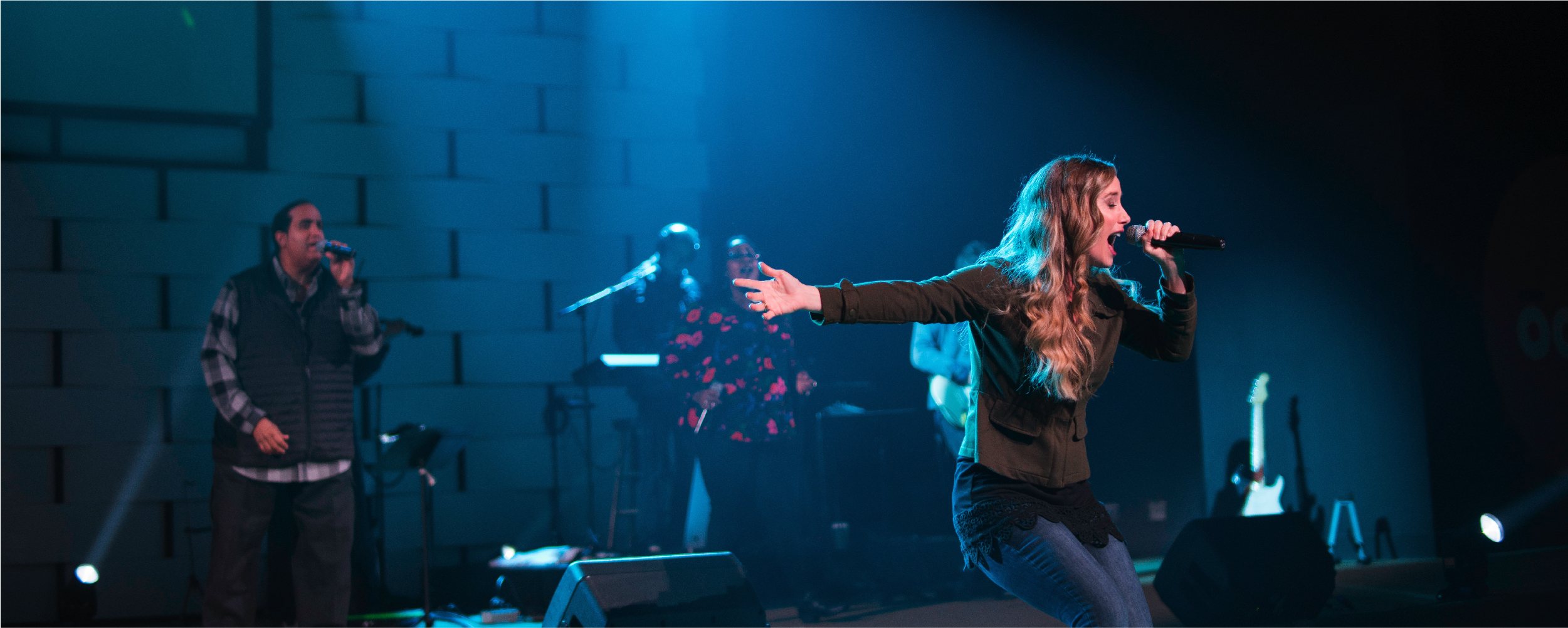
CREATING A LIGHTING STRATEGY
Question #1: What’s the budget? Lighting is an investment, but it can also constitute a large expense. Once you know how much money you can budget for lighting, several other considerations will help simplify the decision and design processes:
Your Space
- What are the dimensions of your space?
- Are there any architectural factors to consider (for example, high ceilings, textured walls, stained glass windows)?
- What natural lighting does your space get, and how does that change from day to night?
- What color are the walls that you’ll be lighting?
Your Service
- What are the common elements of a typical service, and how do you want each element to be lit?
- What is the “atmosphere” you want to create for your faith facility?
- Will your service be streamed or recorded, or in-person only?
- Will you want to change lighting throughout the service, and if so, how often?
- Do you plan on having any special events (pageants, for example) that might need effects?
Your People
- Who is your audience? What are their expectations for how the service should look?
- Are there any members of your congregation who are visually impaired, and might need special lighting considerations?
- If you need to make lighting changes mid-service, who will oversee this?
- Do your volunteers know about operating lighting gear, or will they need training?
Determining the answers to these questions will help you figure out what types of lights you need, how many are required, and where to place them to get the best visual result.
Natural Light
Many faith facilities incorporate lots of windows, either stained glass or simple panes. This will affect how much natural light you already have in a space, particularly in daytime services. However, don’t forget to consider lighting needs for evening services.
Wall Color
How your lights look can be affected by the color of the space you’re illuminating: if you aim a yellow light against a blue wall, you can expect a green result. Neutral colors are the best choice because they provide more of a “blank canvas” for any lighting effect you might want to achieve. Keep in mind that light walls will make the room seem bigger, but dark walls will provide a more dramatic backdrop—either choice can be lit to great advantage.
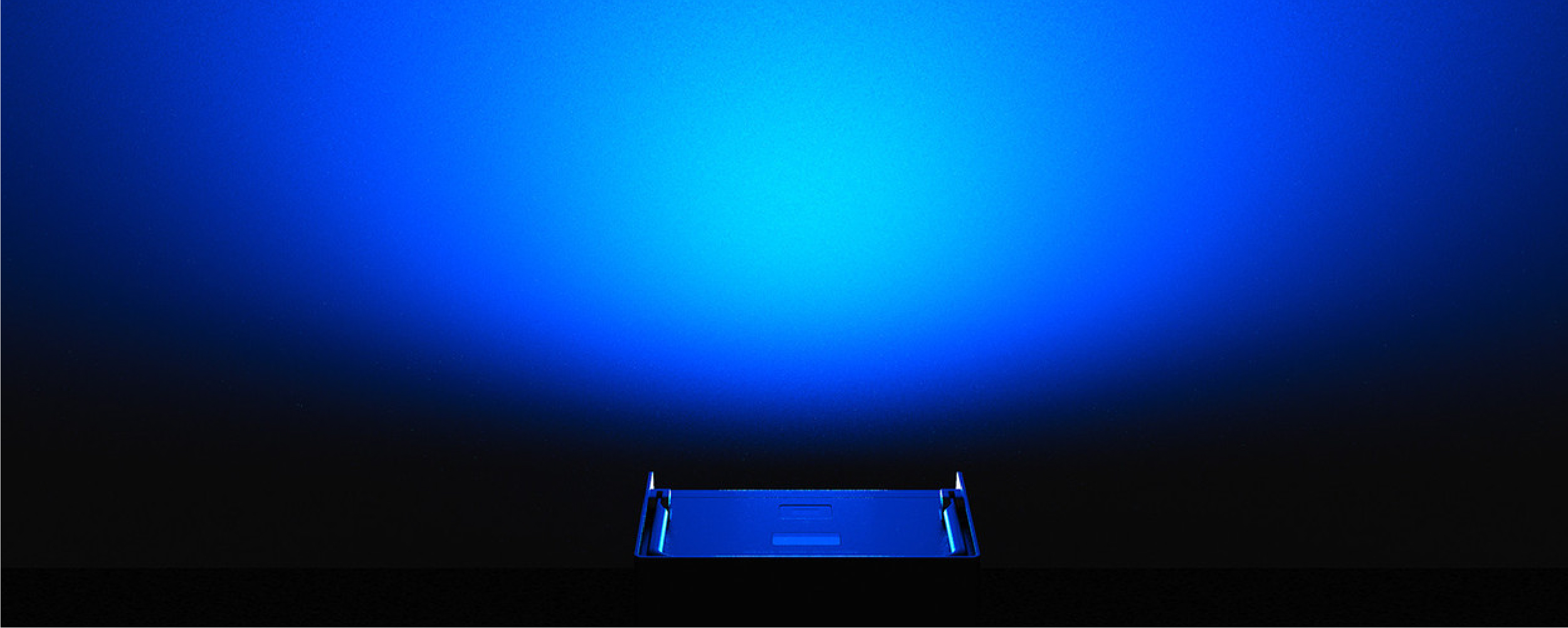
THE “WHO, WHAT, WHERE” OF LIGHTING DESIGN
The following are some basic lighting methods that can instantly improve the visuals of your service for both in-person and remote congregations.
Front Lighting
Unlike entertainment applications where lighting is the focus, house of worship lighting is mostly centered on the people standing before the congregation—such as the worship leader, worship team, choir, guest speaker, or announcer.
As its name implies, front lighting illuminates the front of the space. Front lighting is primarily a clean white light from fixtures such as ellipsoidals, spotlights, cycs, beams, or pars. A front light should be mounted on the ceiling and angled down at about a 45° angle—this will allow the beam to achieve good visibility without blinding the worship leader.
Just one front light source will cause intense shadow; while this may work well for dramatic effect in some situations, for a typical service you’ll want to offset these shadows by placing front lights to the right and left.
It's easy to overdo front lighting, causing people to look washed out (especially on live streams) and unnatural. Instead, experiment with lighting “temperature” (such as choosing a warm white light) and dimming (if that function is available) until you achieve a natural glow; for music or groups, you might want to have a softer light, and then bring up the light intensity during the message portion of the service to increase focus.
Backlighting
Another common pitfall of front lighting is that, once you’ve eliminated most shadows, the worship leader might look two-dimensional or seem to blend into the backdrop. That’s where backlighting comes in.
Backlights are aimed toward the congregation to add definition and dimension to the worship leader. Like their front light counterparts, common backlighting fixtures are pars... with a key difference. Unlike front lights—which should be a clear, natural white—it’s a popular practice to have colored backlights. Though pars come in a wide range of colors, you don’t have to go with anything extreme: amber is a nice way to subtly add warmth.
When adding color to your lighting, the primary consideration should be the mood. Some houses of worship will change colors to sync with different songs. Whether you’re aiming for an energized, joyful atmosphere or trying to evoke a somber and reflective environment, the point is not to distract, but to direct the congregation toward the intended response.
Uplighting and Washes
Unlike the front lighting and backlighting, which are directed toward people, uplighting and wash lighting optimizes the look of your worship space—emphasizing tall ceilings, walls, and architectural details. Without proper uplights, a space can look dark and dingy. Uplights create a calming, inviting glow without becoming visually overwhelming.
Flat surfaces (such as blank walls) are easy to uplight using your front lights, moving heads, or linear bar fixtures. Wash lighting (sometimes called fill lighting or color washing) is used along the same lines, filling in lighting “gaps” between front lighting and backlighting. Washes are helpful when dealing with textured or 3-dimensional features.
Uplighting and wash lighting can be accomplished with white, a mixture of white and colored lights, or just colored lights, depending on what best fits your space and décor.
Lighting Effects
Though many houses of worship might forego lighting effects, others might find them useful, particularly for more elaborate special events. This includes haze effects, which provide contrast to the lighting and definition for individual beams.
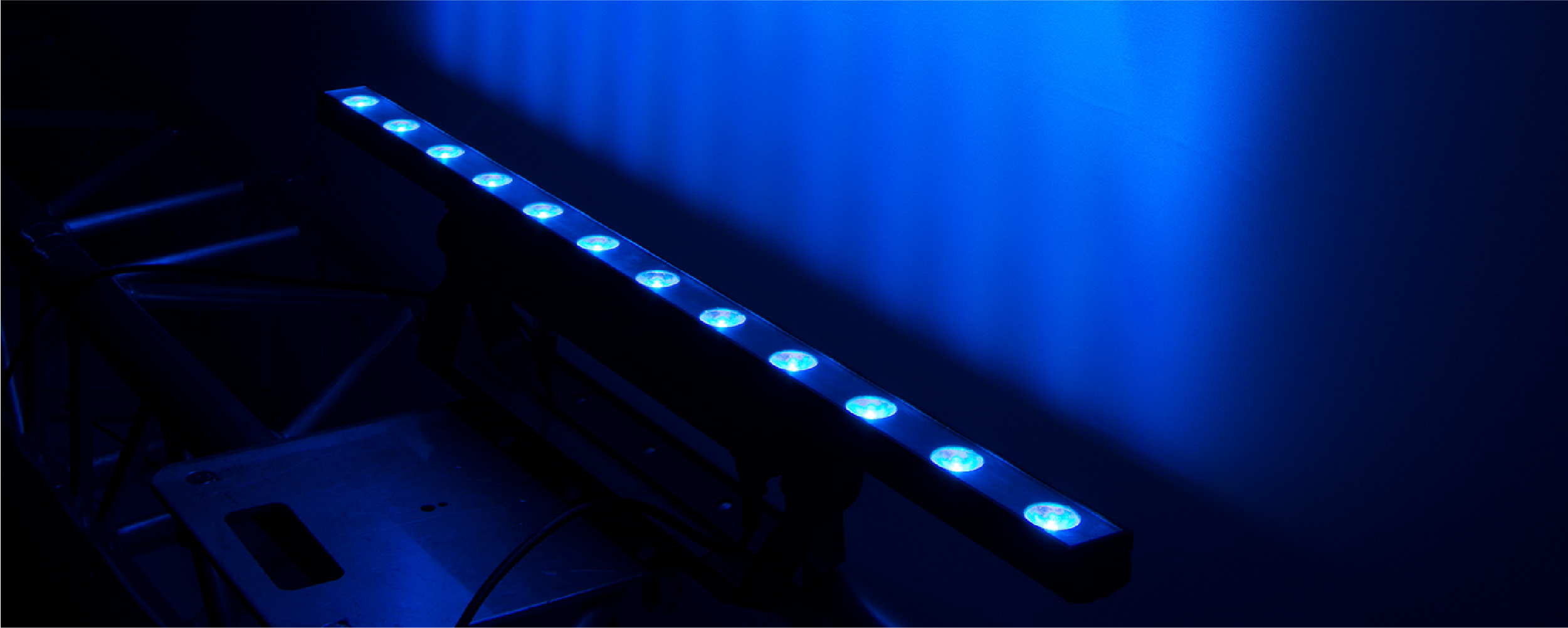
FINDING THE BEST LIGHTING GEAR FOR YOUR HOUSE OF WORSHIP
Investing in lighting gear is just that—an investment. No matter what the size of your budget, you’re going to want to get as much bang for your buck as possible. Lighting design includes not only the fixtures themselves, but also cables, trussing, and other accessories to fully round out that setup.
Lighting Fixtures
“How many lights do I need?” is the first question you may ask when creating a lighting design for your faith facility. The answer will depend primarily on the dimensions of your space. It’s usually wise to start with the bare minimum of fixtures, and gradually build around that basic setup. As a rule of thumb, the more fixtures in your lighting setup, the more dimensionality it will give to the up-front visuals.
Spotlights are a great way to create a visual centerpiece for your congregation. Use one or more for front lighting, focusing attention on an individual soloist or speaker, or even for uplighting.
Ellipsoidals have long been a cornerstone piece of stage lighting setups. Their adjustable color palette and temperature are ideal for situations where you need multiple fixtures to match, such as livestreaming.
For smaller houses of worship, pars are a more compact, energy-efficient, and affordable option than ellipsoidals—while still offering a wide range of features. With flicker-free and low-operation noise options, they’re also ideal for on-camera uses. Many pars also include color mixing and remote-control functionalities.
- ADJ Encore LP7IP 7x20W RGBL IP65 Par
- Blizzard RokBox 5 RGBAW LED Par
- Chauvet DJ SlimPAR Pro Q USB RGBA LED Par
A chief characteristic of a Fresnel light fixture is the lens, which is positioned in front of the light bulb and can be pivoted to widen or contract its beam. Fresnels deliver rich, accurate color rendition, natural skin tones, and optimal brightness, while their flicker-free and virtually silent operation makes them ideal for frontlighting a live-streamed service. Traditional Fresnels tend to be extremely hot, but more recent models enjoy cooler operating temperatures.
- ADJ Encore FR50Z 50W LED Fresnel
- Blizzard Oberon Fresnel
- Chauvet Pro Ovation F-415VW Variable White LED Fresnel
- Chauvet DJ EVE F-50Z LED Fresnel
Offering wide, even coverage, moving heads pivot vertically, horizontally, or both, for fluid changes mid-service. Available functions include dimming, color-changing or blending, and flicker-free operation. However, moving lights don’t always have to move; they simply are a good way to ensure you can change your setup in the future without changing the installation points of your fixtures. They can be used as spotlights, flood lights, or even wash lights.
Effects lighting can be used to add drama or sculpt a specific atmosphere in your space. Particularly in larger spaces, haze can be used to fill empty spaces, add atmosphere, and create contrast so light beams are more distinct. Subtlety is key to using haze: overdone, it can inadvertently make a worship service feel more like a lightshow.
Traditional vs. LED Lighting
Traditional “stage lights” use incandescent bulbs, offering high-intensity illumination and a professional look…but it comes with a price. In addition to being higher-end, higher-priced options, incandescent bulbs in these traditional fixtures burn out, requiring occasional replacement. They also use more electricity and exude heat as well as light.
The option of LED light fixtures makes professional-quality lighting more obtainable. For faith facilities on a budget, LED lighting is more energy-efficient, saving on your electric bill. Additionally, LEDs have a longer lifespan and do not require bulb replacements, reducing future expenses.
LEDs are known for consistent color reproduction—ideal for on-camera lighting that requires consistent light colors across multiple fixtures. They can also be more compact than traditional lights, making them easier to incorporate into cramped areas—which may be the case when upgrading lighting setups in older buildings. Their lower heat output reduces the challenges brought on by conventional lighting—and makes them safer to use without the risk of inadvertently touching a hot fixture and getting burned.
Because they’re not as powerful as traditional lights, LEDs may not have the same brightness capability—although this technological gap has narrowed considerably in recent years. Additionally, some types of lighting control or effects may not be replicated as well as in incandescent fixtures; for example, LED dimming might not be as smooth.
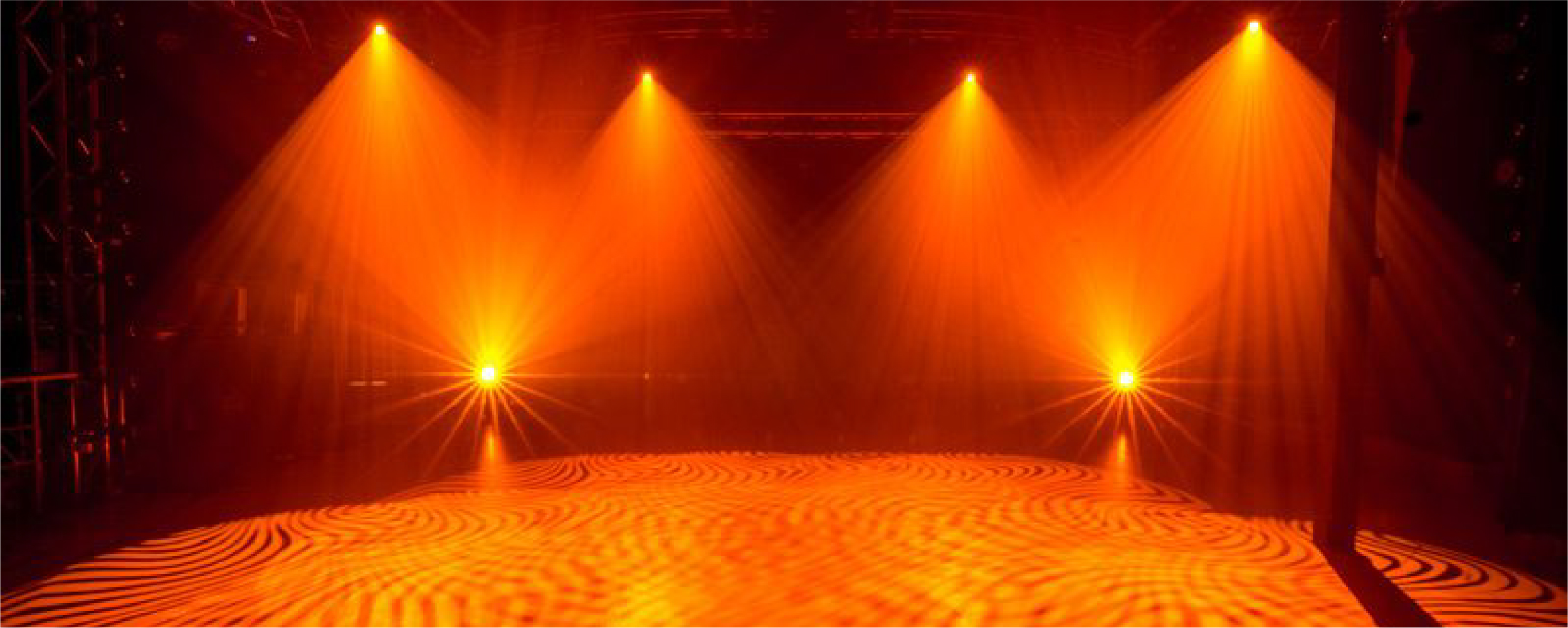
Accessories to Round Out Your Faith Facility's Lighting Setup
Lighting Control for Houses of Worship
Also called lightboards or lighting consoles, lighting controllers coordinate the functions of multiple light fixtures. Create standard presets or fine-tune adjustments in real-time, all from a single piece of gear. Their intuitive layouts accommodate novice operators.
Other ways to control your lighting include dimmers, relays, and receivers. Dimmers control the brightness of light emitted by one or more fixtures, allowing you to create ambiance as you turn down the brightness, and then gradually turn it up again. A lighting relay transmits the electronic signal of your fixtures from one place to another, so you can control where the signal is sent. These are good solutions for complex lighting setups that require more coordination. Lighting receivers and transmitters let you enjoy the benefits of >Digital Multiplex Signal (DMX) lighting protocols. DMX controls multiple lighting channels via a single cable, streamlining the workflow while utilizing multiple light sources.
When implementing lighting controls of any kind, rehearsal is important. If your lighting changes from song to song during a worship set, use the worship team’s rehearsal as a “dry run” of the lighting as well as the audio for that part of the service. Take special note of solos, breaks for announcements, and other sections when light settings might need to be adjusted.
Truss and Stage Equipment
Where fixtures get the glory, truss and stage equipment do the heavy lifting. Truss equipment lets you suspend your lighting gear with confidence, using clamps, couplers, and other hardware you need to assemble the larger components. Gaffer and console tape help position fixtures, secure cables, and other tasks.
Lighting Cables and More
Transmit the best signals to achieve the best lighting with cables including XLR, DMX, and etherCON options, as well as extension cables to spread out your lighting setup across a larger space. Signal splitters and adapter cables further help you connect your lights. Other accessories include testing equipment that ensures your lights are at optimal performance, so there are no unpleasant surprises mid-service. Sculpt the lighting with filters, lenses, and barndoor attachments.
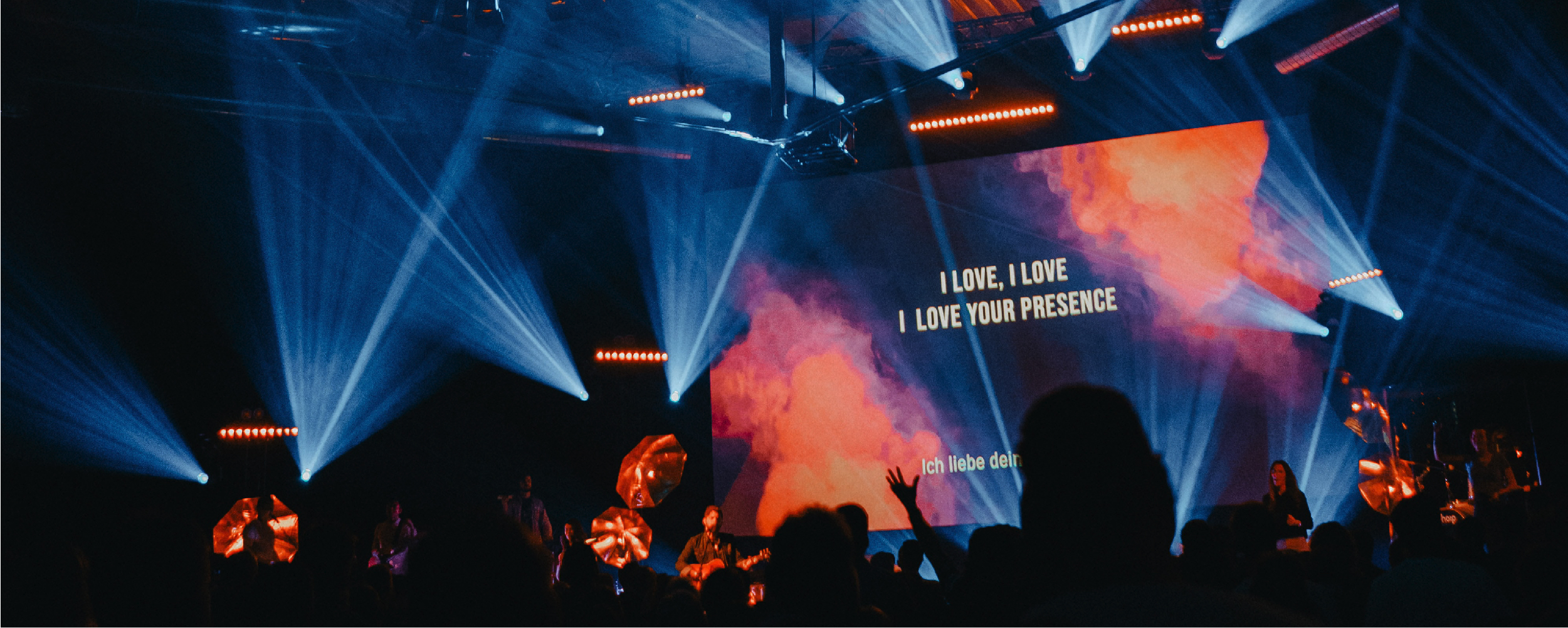
LIGHTING AS A WORSHIP ELEMENT
Your faith facility needs to accomplish a lot: welcome visitors, encourage engagement, and create a meaningful experience that resonates throughout the week. Thoughtful, intentional lighting can help you create a space that achieves these goals without calling attention to itself. No matter the size, shape, or service style, houses of worship of all kinds can benefit from quality lighting setups and following simple, yet effective, lighting design.
Ready to mix and match fixtures to assemble the perfect stage lighting package for your House of Worship? Sound Productions is a great place to start. Contact our Account Managers at info@soundpro.com or by calling 800.203.5611 to get expert advice on what lighting gear would be the best fit.

Laura has been part of the SoundPro team since 2021. In her downtime, she enjoys hiking, quilting, and watching shark documentaries with her cat (though not all three at once).

